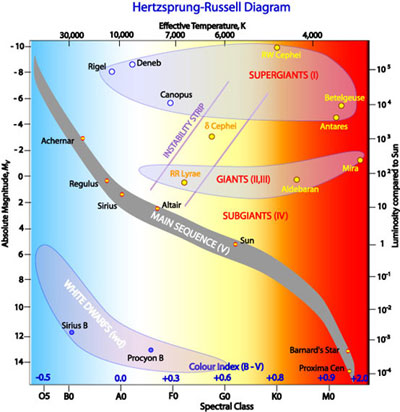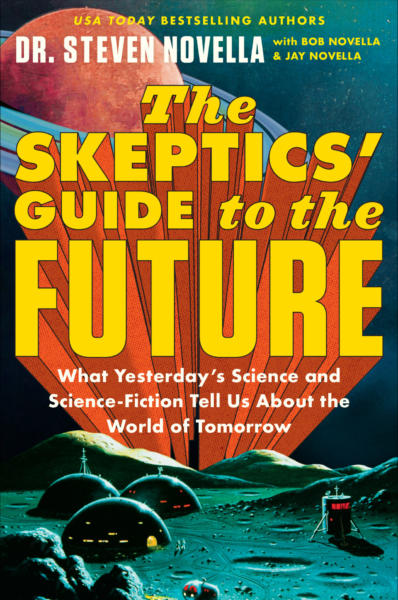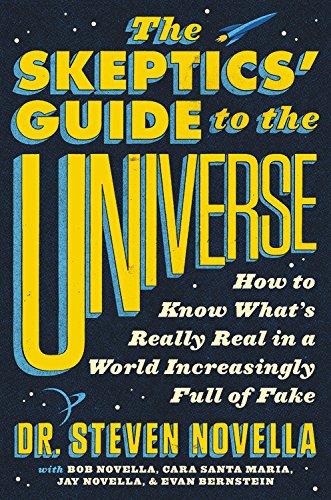May 19 2025
End of Life on Earth
 Let’s talk about climate change and life on Earth. Not anthropogenic climate change – but long term natural changes in the Earth’s environment due to stellar evolution. Eventually, as our sun burns through its fuel, it will go through changes. It will begin to grow, becoming a red giant that will engulf and incinerate the Earth. But long before Earth is a cinder, it will become uninhabitable, a dry hot wasteland. When and how will this happen, and is there anything we or future occupants of Earth can do about it?
Let’s talk about climate change and life on Earth. Not anthropogenic climate change – but long term natural changes in the Earth’s environment due to stellar evolution. Eventually, as our sun burns through its fuel, it will go through changes. It will begin to grow, becoming a red giant that will engulf and incinerate the Earth. But long before Earth is a cinder, it will become uninhabitable, a dry hot wasteland. When and how will this happen, and is there anything we or future occupants of Earth can do about it?
Our sun is a main sequence yellow star. The “main sequence” refers to the Hertzsprung-Russell diagram (HR diagram), which maps all stars based on mass, luminosity, temperature, and color. Most stars fall within a band called the main sequence, which is where stars will fall when they are burning hydrogen into helium as their source of energy. More massive stars are brighter and have a color more towards the blue end of the spectrum. They also have a shorter lifespan, because they burn through their fuel faster than lighter stars. Blue stars can burn through their fuel in mere millions of years. Yellow stars, like our own, can last 10 billion years, while red dwarfs can last for hundreds of billions of year or longer.
Which stars are the best for life? We categorize main sequence stars as blue, white, yellow, orange, and red (this is a continuum, but that is how we humans categorize the colors we see). Interestingly, there are no green stars, which has more to do with human color perception than anything else. Stars at an otherwise “green” temperature have enough blue and red mixed in to appear white to our color perception. The hotter the star the farther away a planet would have to be to be in its habitable zone, and that zone can be quite wide. But hotter stars are short-lived. Colder stars last for a long time but have a small and close-in habitable zone, so close they may be tidally locked to their star. Red dwarfs are also relatively unstable and put out a lot of solar wind which is unfriendly to atmospheres.
So the ideal color for a star, if you want to evolve some life, is probably in the middle – yellow, right where we are. However, some astronomers argue that the optimal temperature may be orange, which can last for 15-45 or more billion years, but with a comfortably distant habitable zone. If we are looking for life in our galaxy than orange stars are probably the way to go.
What about our humble yellow sun? Our sun is about 4.6 billion years old, with a total lifespan of about 10 billion years. So it might seem as if we have another 5 billion years to go, which is a comfortable chunk of time. While main sequence stars are relatively stable, they do subtly change, and can significantly change toward the end of their life. So the question is – when will our sun change enough to threaten the habitability of the Earth? The 5 billion years figure is how much longer our sun can burn hydrogen. After that it will start burning its helium at the core, and that is when it will start expanding into a red giant. However, we will run into problems long before then. As the sun burns hydrogen and collects helium at its core, it heats up, by about 10% every billion years. When will this slow heating spell doom for life on Earth?
There are two other variables to consider. The environment of the Earth depends on three main things – the sun, the orbit of the Earth (and anything else in the solar system that might affect Earth), and conditions on Earth itself (the atmosphere, the biosphere, geologically, our magnetic field). When you think about it, having a stable environment for billions of years is pretty amazing.
A recent paper considers the interaction between the slowly warming sun and the biosphere. Using a supercomputer to model what may happen, they conclude:
Our results suggest that the planetary carbonate–silicate cycle will tend to lead to terminally CO2-limited biospheres and rapid atmospheric deoxygenation, emphasizing the need for robust atmospheric biosignatures applicable to weakly oxygenated and anoxic exoplanet atmospheres and highlighting the potential importance of atmospheric organic haze during the terminal stages of planetary habitability.
In other words, the increasing heat will lead to chemical reactions that will reduce atmosphere CO2, this in turn will limit oxygen production through photosynthesis. Oxygen levels will crash, making the Earth uninhabitable to anything dependent on CO2 or oxygen. This will happen in about 1 billion years – 4 billion year sooner than our red giant phase. Eventually the Earth will continue to heat anyway, burning away all our water and resulting in a dry lifeless desert.
Is there anything we can or should do about this? I will leave a deep discussion of “should” to philosophers, and only say keeping Earth habitable to life for as long as possible seems like a good idea to me. Assuming we want this, what can we do? First let me say that I think the question is irrelevant from a practical perspective. Even in a million years, humanity will have changed significantly, definitely technologically, but also probably biologically. In 20 million years or 100 million years, still long before the Earth becomes uninhabitable, other technological species may evolve on Earth. Many things can happen. It’s massively premature to worry about things on that timescale.
I also think its very likely that long before this becomes an issue humanity will either be extinct, or (hopefully) we will be a multi-planet species. We will likely settle many parts of our own solar system, and eventually travel to the nearest stars. Even still, the future technological inhabitants of Earth may want to preserve its ecosystem for as long as possible.
Assuming we cannot change the sun (barring some ridiculously advanced stellar engineering) we could try to manipulate the other variables. We could, for example, put objects into orbit that will reflect away part of the sun’s light and heat to compensate for its increased output. Another option seems more radical but may be easier, and even necessary – we could slowly move the Earth further from the sun to precisely compensate for the sun’s increased temperature. We could use spacecraft flybys to take some angular momentum from Jupiter and give it to the Earth, pushing it a tiny bit further from the sun. By one calculation, such a flyby would only need to occur once every 6,000 years in order to compensate for the warming of the sun (hat tip to Warwick for sending me this link).
But it seems likely that if we have a robust space presence within our solar system over the next billion years (seems likely), there will be countless Earth flybys by spacecraft. What we will need to do is track all the flybys, and/or their effects, and then calculate a compensatory flyby schedule, which can include moving the Earth slowly further from the sun.
It’s interesting, and daunting, to think about such long time scales. It reminds me of a science-fiction story (I forget which one) in which a tourist planet started to run into the problem of tourists carrying away net mass. Over hundreds and thousands of years, the planet was losing mass. So they had to pass and strictly enforce rules that no visitor could leave with more mass than they came with. If you wanted souvenirs (or even gain a little weight, which people on vacation often do) you had to pack your suitcase with some rocks to leave behind.
It seems like it will not be overly difficult for future Earth inhabitants (whether humans or something else) to keep Earth habitable for the full 5 billion years left in our sun’s main sequence life. So we have that going for us. But seriously, while all this is a fun thought experiment informed by our current scientific knowledge, it is also a reminder of how fragile our ecosystem is, especially when you think long term. We should respect our current stability, and we shouldn’t mess with it casually.






